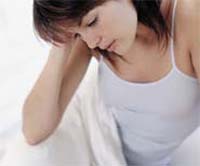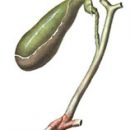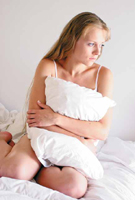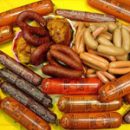In the morning you feel nausea and bitterness in the mouth? Severity and pain in the right hypochondrium interfere with living normally? Often be angry? Contact the therapist - such symptoms may indicate a gallway disease.
Content
Gallway disease (neop. cholelithiasis) – A common disease that is characterized by the formation of stones in biliary tracts: gallbladder and bile ducts. 10-15% of the population of developed countries, each fifth woman and every tenth man suffer from this disease. Every year in our country, about 600,000 bubble removal operations are performed, which in frequency take second place after the removal of appendix.
Gallbladder
Gallbladder is a small bag attached to the liver. It accumulates bile - the complex composition necessary for the processing of fats entering our body with food. In addition, bile is responsible for maintaining normal microflora in the intestine. If the bile stagn or its composition has changed, it fails in the work of the gallbladder and stones are formed in its drives.
In the bile of a healthy person contains bile acids and cholesterol. Cholesterol is fat that is produced by the liver and absorbed from the intestine. Bile acids contribute to dissolving cholesterol and bringing it with bile. With a violation of equilibrium between cholesterol and bile acids, an excess of cholesterol in bile, or a lack of bile acids, from excess cholesterol on the inner shell of the gallbladder are formed and stones are growing. The oversaturation of the bile cholesterol occurs when obesity, a high-calorie diet, an increase in animal firms, sugar, sweets. The population of economically developed countries has a crucial role in the emergence of gallstone disease.
 For young women who «Sit down» On various diets in order to reduce weight, an important factor in the formation of stones is a dramatic weight. In order to obtain the energy, the body begins to split subcutaneously - fat fiber, while from the tissue is a quick output of a large amount of cholesterol, which enters the gallbladder. Stimulate the flow of cholesterol in the gallbladder Women's hormones, it leads to the fact that women have 2-3 times more often than in men. It is related to the fact that women who took the hormonal contraceptives of the first generations, the disease occurs earlier and more often than women who did not take these drugs.
For young women who «Sit down» On various diets in order to reduce weight, an important factor in the formation of stones is a dramatic weight. In order to obtain the energy, the body begins to split subcutaneously - fat fiber, while from the tissue is a quick output of a large amount of cholesterol, which enters the gallbladder. Stimulate the flow of cholesterol in the gallbladder Women's hormones, it leads to the fact that women have 2-3 times more often than in men. It is related to the fact that women who took the hormonal contraceptives of the first generations, the disease occurs earlier and more often than women who did not take these drugs.
The increase in the formation of bile stones is associated with aging, since the content of cholesterol in bile increases with age. By 75 years old, 20% of men and 35% of women discovered a gallway disease.
If the motorcycle bubble motor function is reduced, then it cannot be completely emptied several times a day, getting rid of mucus and bile, bile stars, suction from her liquid. Bile becomes thick, knitting it easily formed stones. The reduction in the motor function of the gallbladder occurs during pregnancy (many-reasoning women get sick more often than battered), long starvation (eat food stimulates the selection of bile from the gallbladder), in severely ill, the nutrition of which occurs by intravenous drug administration, (food intake stimulates the selection of bile from the bile bubble).
In the occurrence of the disease, heredity and ethnic factors play an important role. Relatives of patients with stones are revealed 2-4 times more often than people whose heredity is not burdened with a gallway disease. Exceptionally rarely bile disease occurs at the indigenous people of Thailand and Singapore. Low frequency is also characteristic of Eskimos.
Manifestations of gallstone disease
60-80% of persons do not cause unpleasant sensations. The remaining typical manifestation of the disease is bile colic. This is an acute attack of pain, the reason for which is the periodic blockage of the gallbladder duct stone. Colic lasts from 15 minutes to 5-6 hours. Hurts in the area of the stomach, often gives to the right shoulder, between the blades. Typically, pain arise in the evening or at night. May be vomiting that does not bring relief pain.
Than dangerous stones in the gallbladder?
If the colic lasts more than 6 hours, then this may be a sign of the development of infection in the bustling bubble, accompanied by the attachment of the fever, so develops acute cholecystitis. He, in turn, can be complicated by: gangrene gallbladder, bubble hole and the development of inflammation in the abdominal cavity, intestinal obstruction due to blockage of its stone. If the stone clogs the overall biliary duct, it cannot be splashing into the intestines, and the organism is poisoning its components due to the flow of them in the blood, jaundice develops. Can develop acute pancreatitis. From the pancreas, there is a duct that connects with the bile duct, an ampoule is formed. On it bile and pancreas juice go to the duodenum. If you have "cholelithiasis", then the stones from the gallbladder can flow into the ampoule and clog it. And then, bile and gland juice containing enzymes can not be rested in the duodenum, and under pressure penetrate the ducts into the pancreas fabric, causing acute pancreatitis.
As a result of repeated seizures of acute cholecystitis, chronic cholecystitis develops. Against the background of chronic inflammation in the walls of the gallbladder, calcium can be postponed. Develops «porcelain» Gallbladder, it is often combined with gallbladder cancer.
If you have revealed stones in the bustle bubble, but there was no bile colic?
Annual risk of developing signs of the disease you have 4%. After 5 years of the course of the disease in 20% of patients, colic can appear, after 10 years - in 15%, after 15 years – in 18%. Because with age, the risk of developing signs of the disease is reduced, and the removal of the gallbladder does not propagately affect the life expectancy, it is believed that in the absence of signs of the disease, the removal of the gallbladder is not shown.
You are shown normalization of body weight, physical education and sports, an exception to fatty food and sweets, regular reception in 3-4 hours, elimination of long periods of starvation, fluid reception at least 1.5 liters per day.
If you have a bile colic?
Refer to the doctor immediately – Gastroenterologist, hepatologist. You need a survey that will determine the tactics of treatment. After the first colic, the operation is usually not shown. You may have the likelihood of dissolving stones by taking tablets. But after the second and subsequent, the removal of the gallbladder is shown, since the risk of developing complications and death after re-colic increases 4 times.









